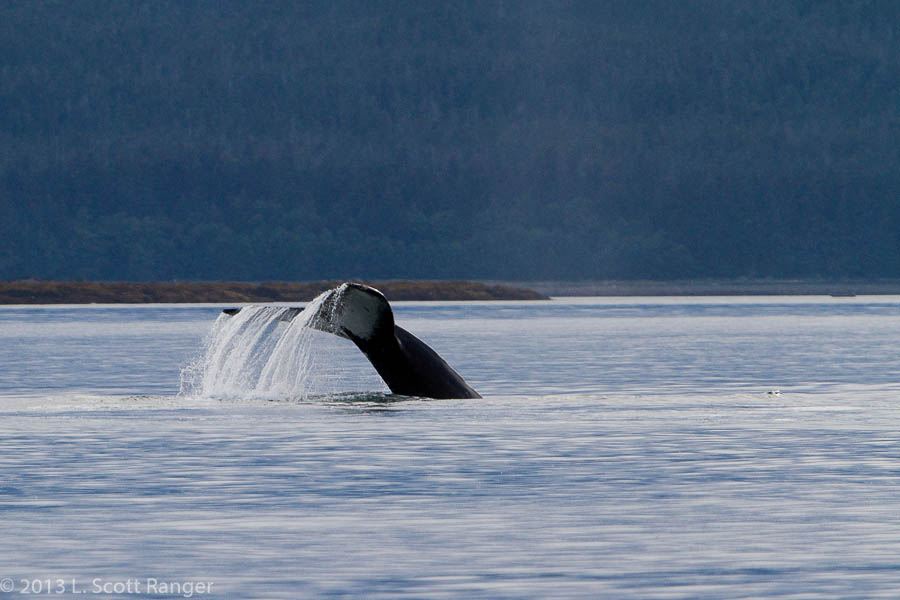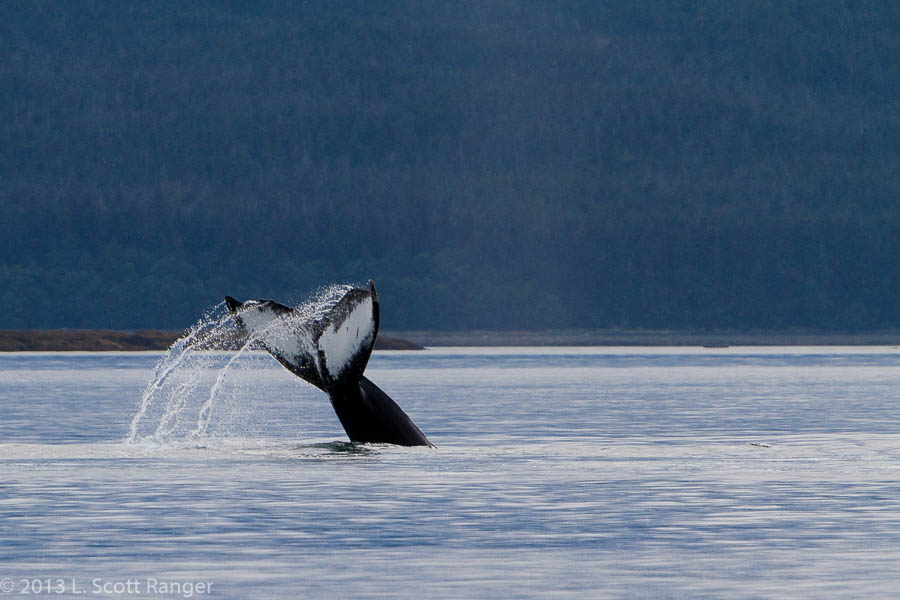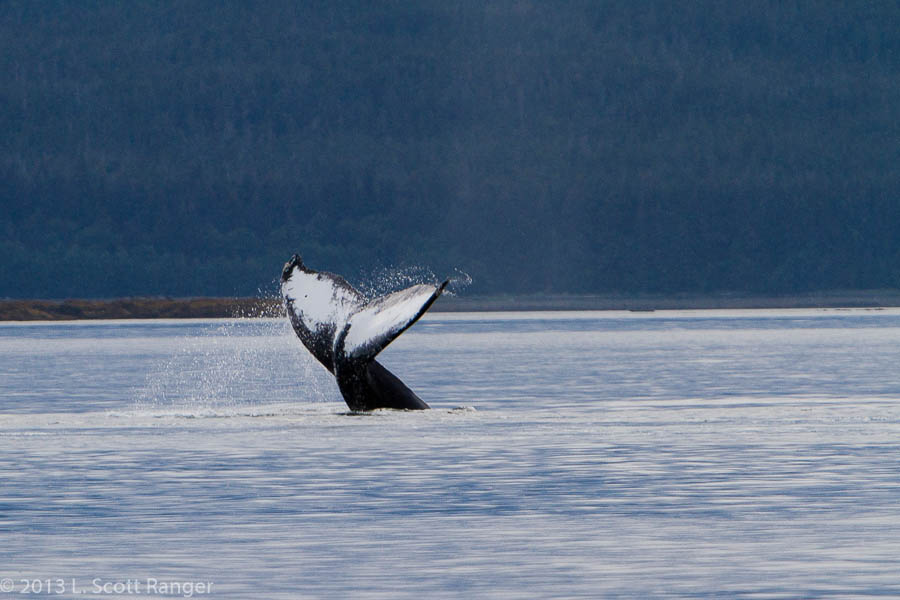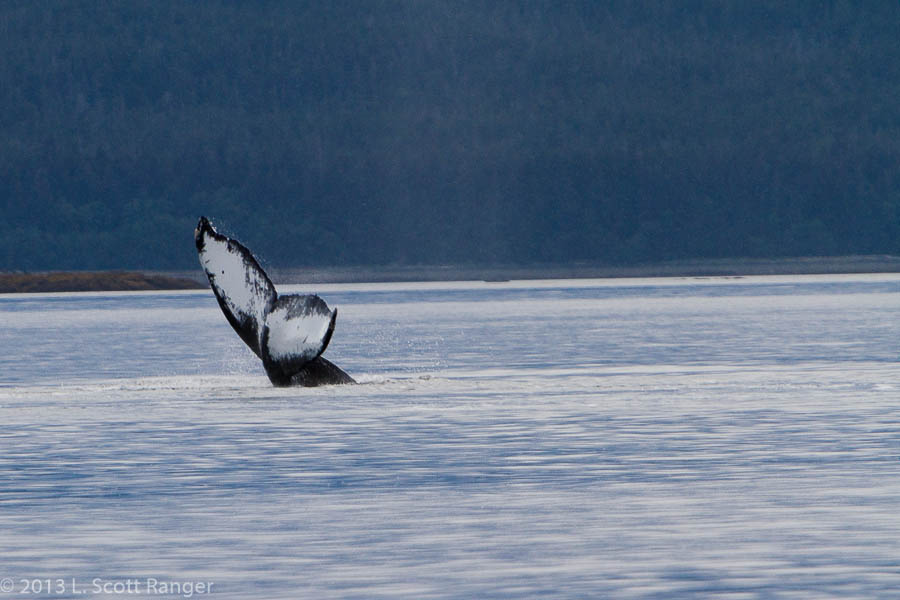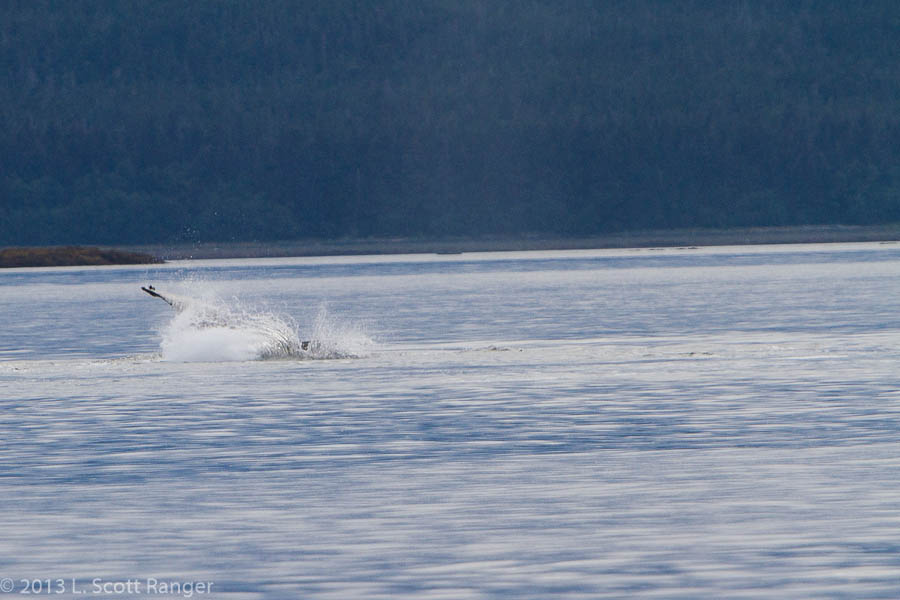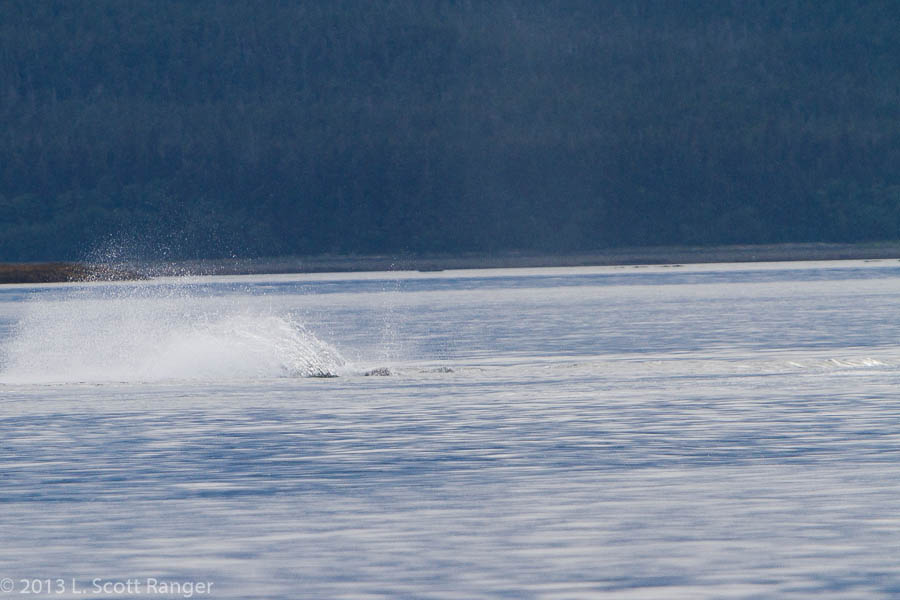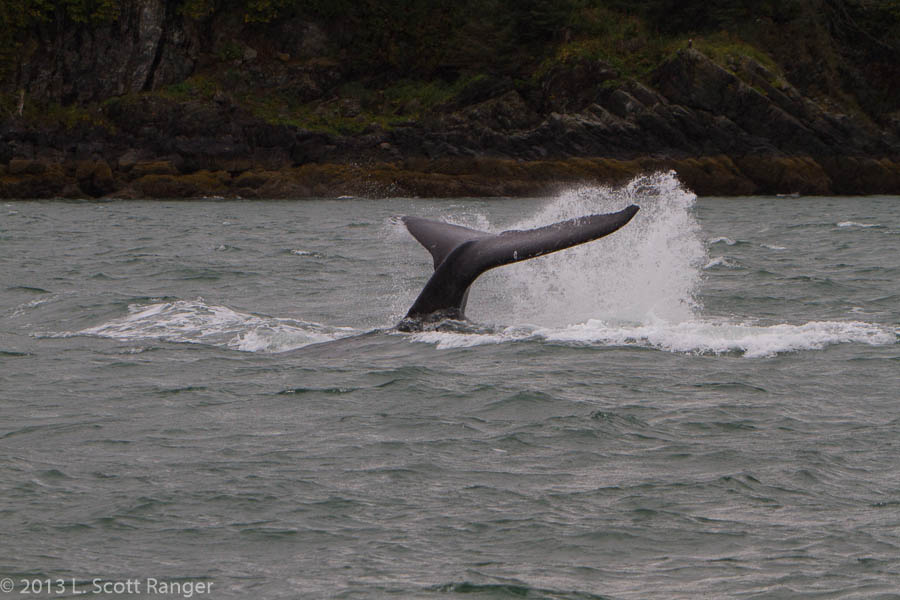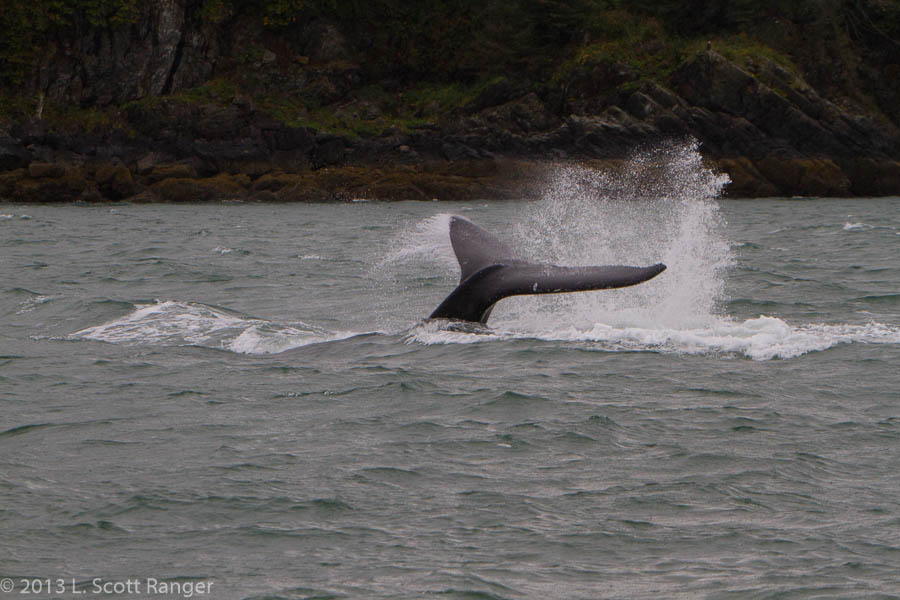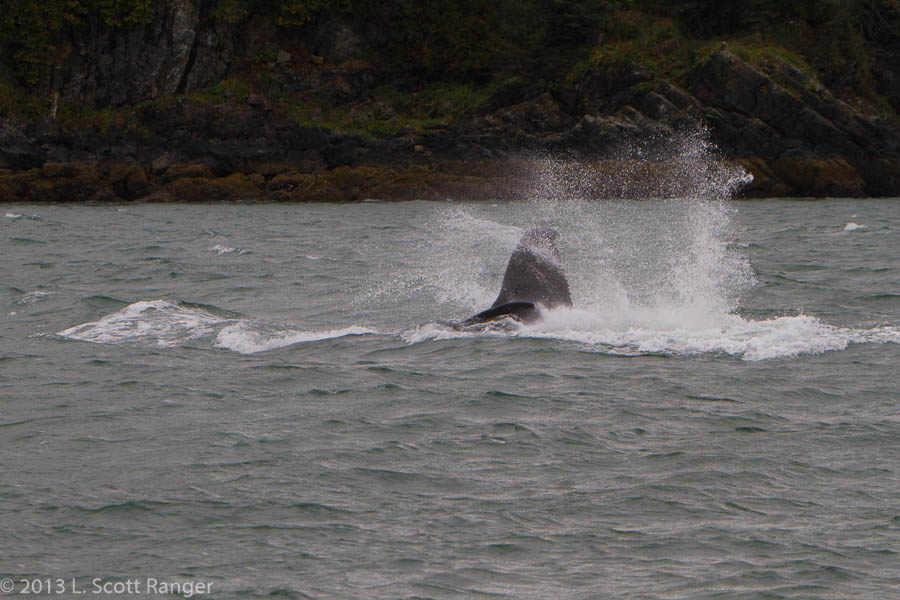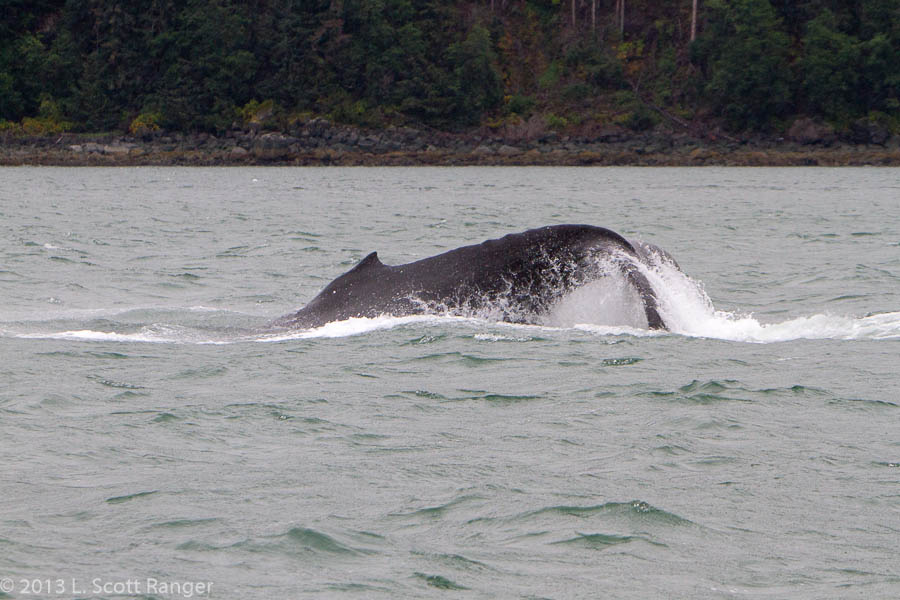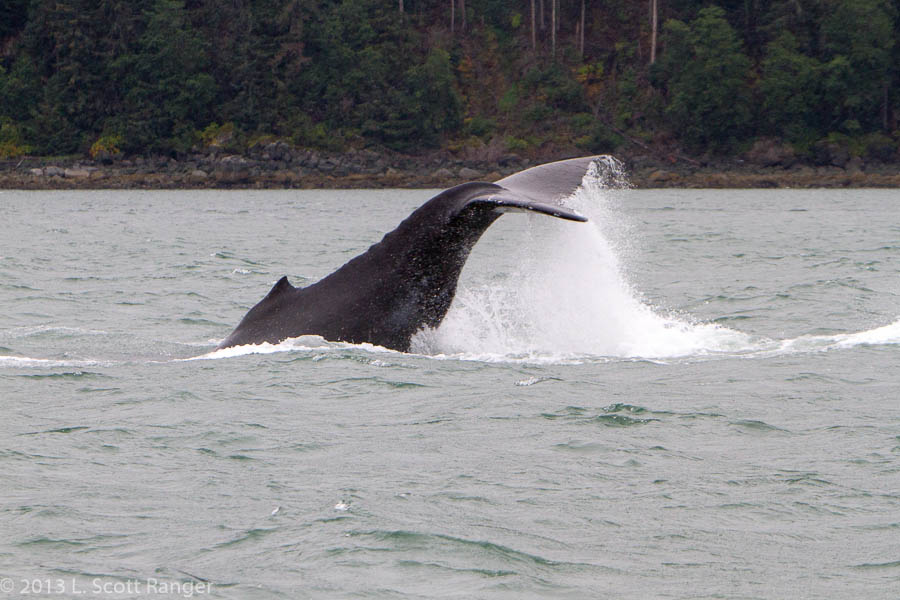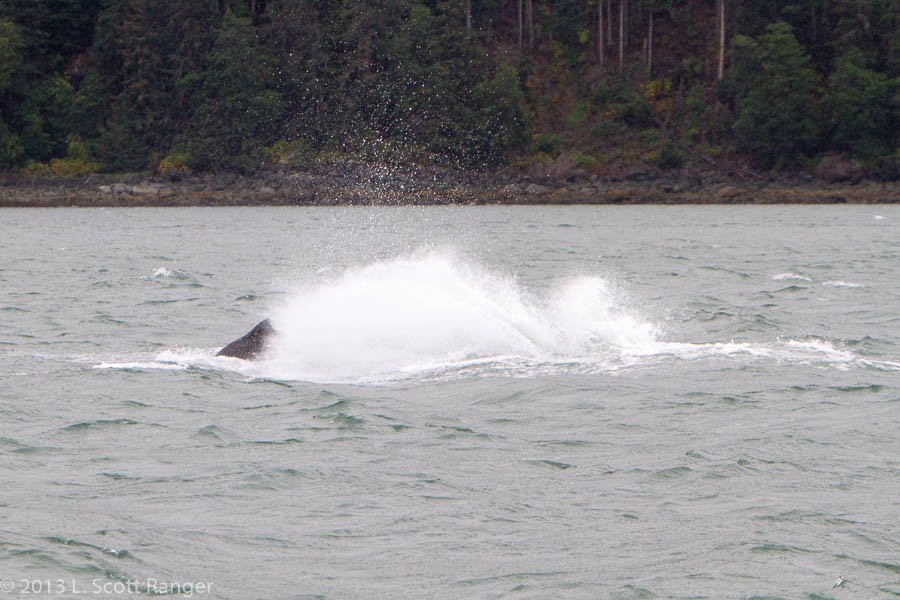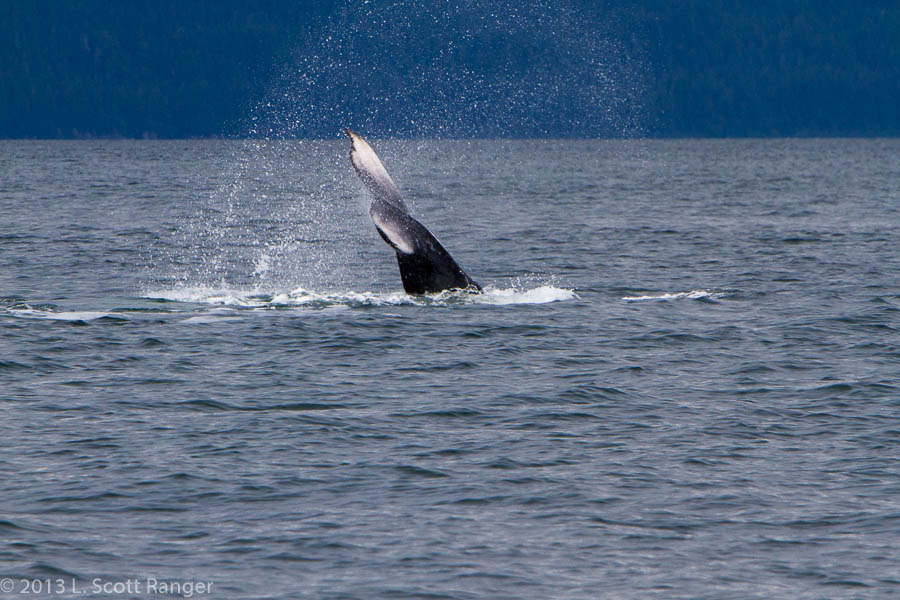Tail Slap
Also called tail lobs, lob tail and fluke slap. Whale 1538, Flame, already famous for high tail dives that expose her beautiful white flukes, does a set of aggressive tail slaps on August 25, 2010 near Eagle Reef in Favorite Channel. She places herself into a shallow dive position with her peduncle and tail out of the water and water streaming off her flukes just like she’s going to dive. Except she throws her flukes forward so the remaining water is thrust forward instead of washing off the back. She then very quickly reverses the motion and using the pivot point of fluke attachment to the vertebral column, slaps the water with great force.
This unidentified juvenile starts a series of tail slaps with some low tail rises on September 5, 2011 in Favorite Channel near Aaron Island. After a couple of these, the youngster gets far more athletic and raises not just the peduncle but all the way to forward of the dorsal fin. With this leverage, the splash is larger and the sound louder.
|
Here 1538’s 2013 Calf shows a variation on a theme with the slapping being done with with dorsal rather than the more common ventral side in Saginaw Channel just east of Point Retreat on July 6, 2013.
Why tail slap? The noise could mean some sort of communication such as an invitation to join or a warning to stay away. The noise could be to stun small schooling fish or make them school tighter so as to be easier to eat. This is probably not the case with the calf as it is still nursing. The impact could be to dislodge either barnacles or sea lice (I’ve seen both on baby whales when they arrive here in May). Testing these ideas would be difficult and they remain speculation. |
